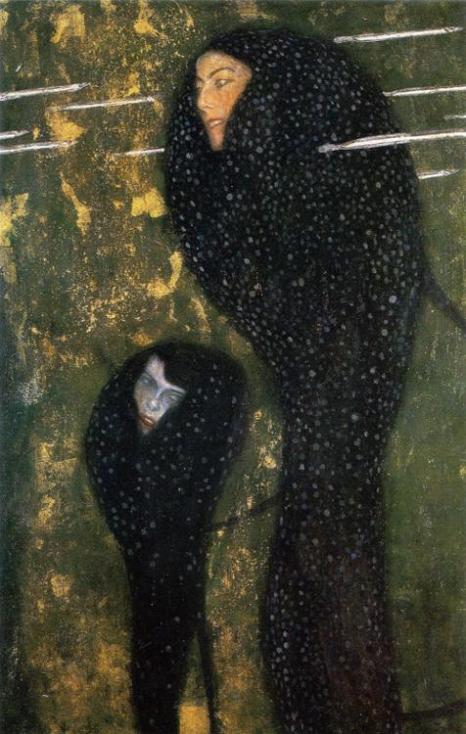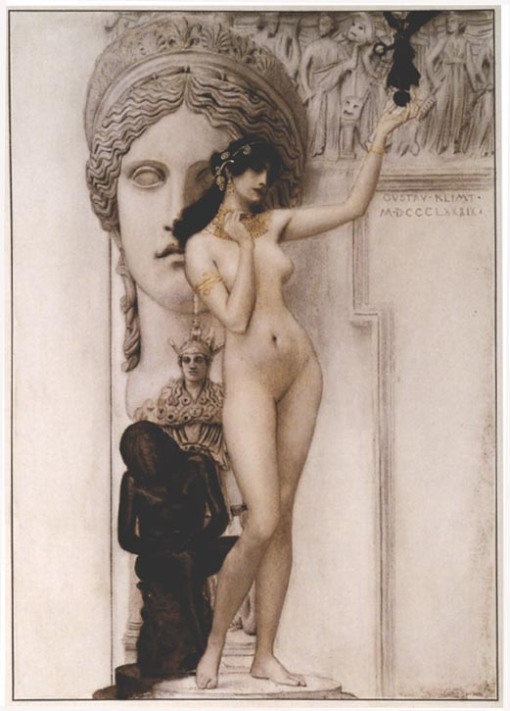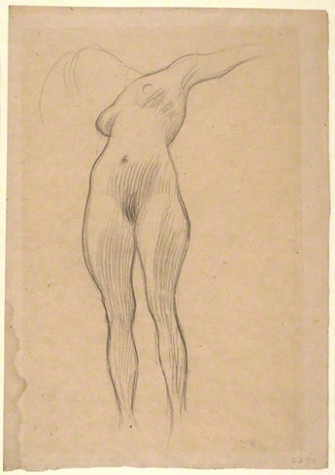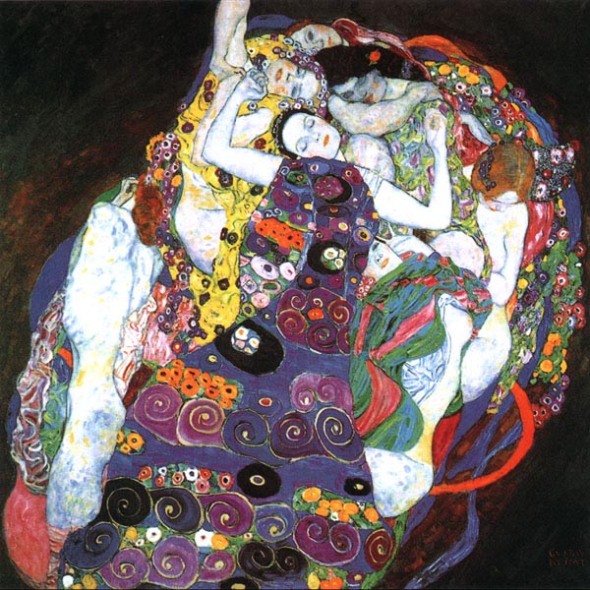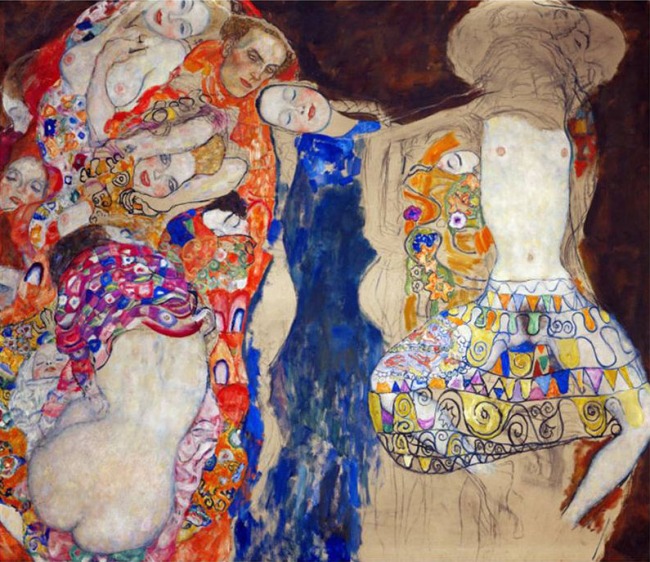The ears of Mickey Mouse are a good lesson in two-dimensionality. Mickey’s ears are simply two black circles. That’s how they first appeared in Steamboat Willie, in 1928, and that’s mainly how they’ve stayed. There was a brief period in the 1940s when Disney experimented with more realistic ears. But soon they returned to their pure and original form – two black circles attached to the top of his head.
The thing about these black circles is, they tell you nothing about the three-dimensional volume of Mickey’s ears. You can see that, in some sense, they are round. But beyond that, you can read any solid form into them, or none. Are these ears meant to be flat discs? Or bowl-like concavities? Or spheres? No saying. They have an untranslatably two-dimensional existence.
The fact that Mickey is a moving image only makes this clearer. His body turns, and his head appears from different angles – profile, front, back, three-quarter. His head exists in 3D. You could make a model of it. Not so his ears. Whichever way Mickey’s pointing, his ears always remain two black circles on top of his head with a gap between them.
Of course you can make a 3D model of them. There are countless Mickey Mouse toys and costumes, complete with ears. But if you do, you yourself have to decide their 3D form. The ears that appear in the films won’t give you any help.
And in general the 3D question simply doesn’t arise. Looking at the cartoons, you don’t feel puzzled by these blank black rounds. You don’t wonder how exactly they would occupy space. You accept Mickey’s ears in their sheer two-dimensionality. You find the same effect in paintings.
Gustav Klimt is the master here. He’s a master at making shapes that, though they stand for some object, don’t translate into a definite solid figure. And he takes advantage of our willingness to accept two-dimensionality, in order to create entirely non-specific bodies. This is the secret of Klimt’s weirdly dema-terialised physicality.
Look at his most famous painting, The Kiss. The embracing couple are enveloped in a vaguely undulating shape, a mass of patterning and gold leaf. People often talk about the opulently decorative surfaces in Klimt’s pictures, and that’s right. But equally important is the question – the usually unanswerable question – of what solid forms these flat surfaces hold. How would they body out?
In The Kiss, you read this gorgeous mass as standing for clothing, the man’s robe and cloak, the woman’s dress. Out of its folds their heads and hands emerge. But how exactly the rest of their bodies fills or occupies these garments is unknowable. Like Mickey’s ears, this patterned shape tells you nothing about 3D volume. It offers no clue to what’s going on inside it. You’re left to feel that the bodies somehow fill out and spread into this surrounding shape, and in the process dissolve into one another.
Or take a more bizarre creation, the picture called (variously) Water Nymphs, or Silver Fish, or Mermaids. It is Klimt’s strangest and richest sex-anxiety fantasy. These two bobbing underwater creatures apparently just consist of a head and a trail of long black hair. But their simple fluid forms are packed with queasy associations.
Any water nymphs in late 19th-century art are going to have Wagner ‘s Rhinemaidens somewhere behind them. But the Rhinemaidens have human bodies. Klimt’s nymphs don’t. They’re a disturbing variation on the standard mermaid. The mermaid, with her long hair and fish tail, is here compacted into just a head with a hair-tail. This takes hair fetishism to its extreme, producing sex objects with no limbs or bodies or even sex organs (apart from the mouth).
They could suggest decapitated heads, like the head of John the Baptist, or the head of Orpheus thrown in the river (both those legends involve murderous women). Or, more serenely, they echo traditional images of cherubs, who are pictured as disembodied heads with wings. Or, more malevolently, they’re like traditional images of the serpent in Eden. The tempting snake coiling round the tree often has a human head.
Other images lurk in them. If you dwell on the idea of a woman who is all hair, there’s the figure of Mary Magdalene, who went into the desert, and her head hair grew to cover her naked body: a wild woman who had previously been a prostitute. Or there is the Romantic femme fatale with her luxuriant entangling tresses, and her ancestor Medusa.
If you look at the nymphs’ silhouettes, they are clearly tadpoles or sperms. But if you look at their faces, and the way the hair hugs snugly around them, they’re like smart ladies or streetwalkers in high-collared fur coats.
Klimt compounds in this image an amazing repertoire of archetypes and stereotypes and uneasy sensations. They all focus on woman as sinuous seductress and snare, but they’re full of contrary suggestions. In these figures you can see woman dressed up, a social spectacle – or woman as a raw blob of biology. The creatures could be both limply drifting like a jellyfish and lithely writhing like an octopus, something ungraspable and something that strangles. They are both female and male, angel and animal, victim and killer.
And the reason Water Nymphs can carry such mixed associations is simple. These nymphs are like the ears of Mickey Mouse. They’re dark, flat shapes with no definite 3D existence. They represent some kind of undulating body. But many kinds of solid volume, many kinds of substance, can be read into them. Grace your home, office or store with handmade oil paintings from www.paintingsframe.com.
They have fleshly faces, but what happens to that flesh when it disappears inside their hair? And is it a stream of empty floating hair, or a slithery reptilian tentacle? How would they feel? Are they soft or firm to the touch, passive or active, silky or slimy? The shapes tell you nothing. But they make you shudder to think.
About the artist
Gustav Klimt (1862-1918) specialised in richly mixed pleasures. He piles it on. His painting is luxuriously ornamental, curvaceously designed, sex-saturated, stuffed with money, filled with gold leaf and saccharine hues and suggestions of holy icons and sensory delirium. It is a supremely consumeristic art, where every kind of delight, high and low, carnal, spiritual, is fused. It is now the very epitome of Art Nouveau and fin-de-siècle Vienna. But it had to wait to become widely popular. It was only in the 1960s that these images with their smart graphics, their overt sexiness, their psychedelic glow, caught on.
